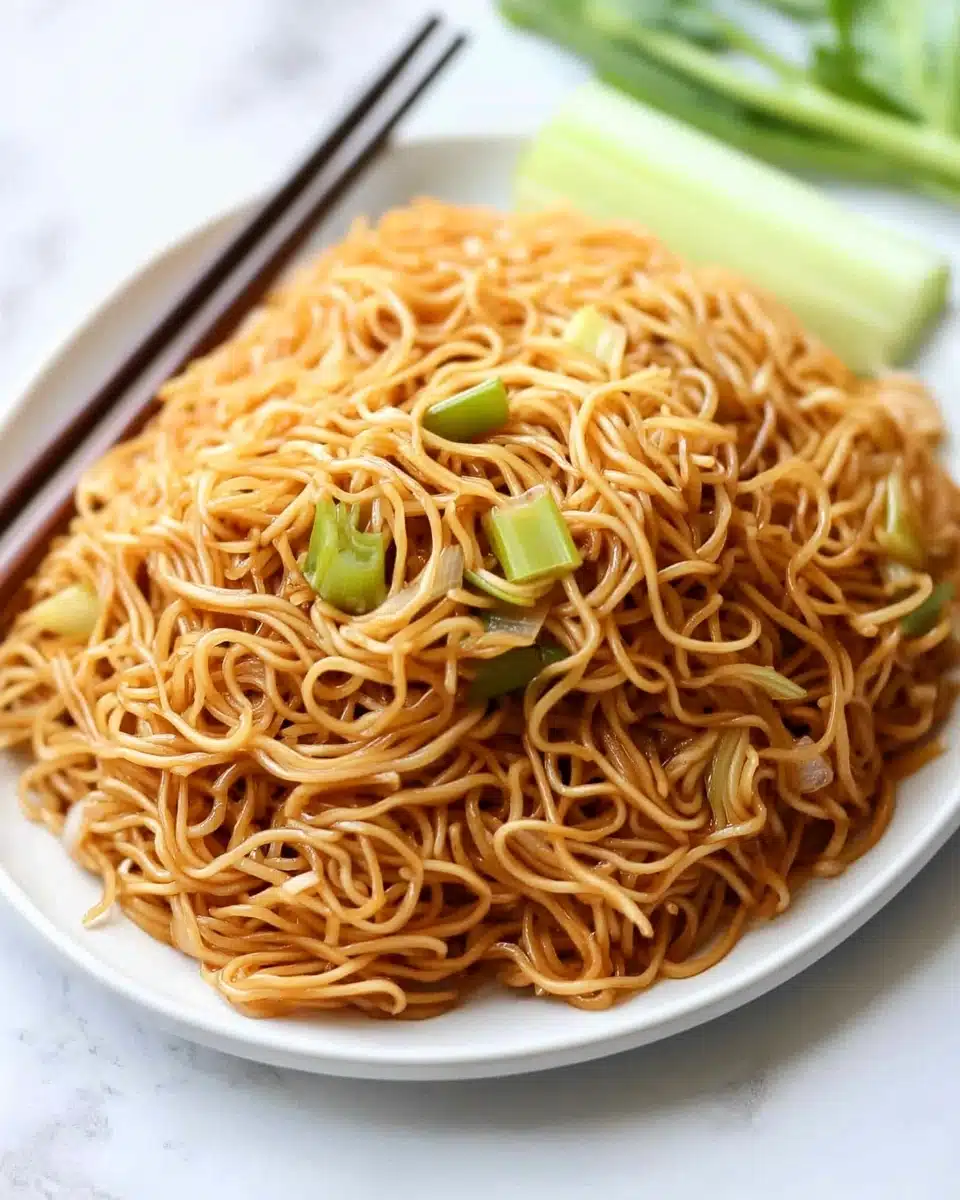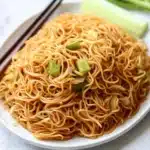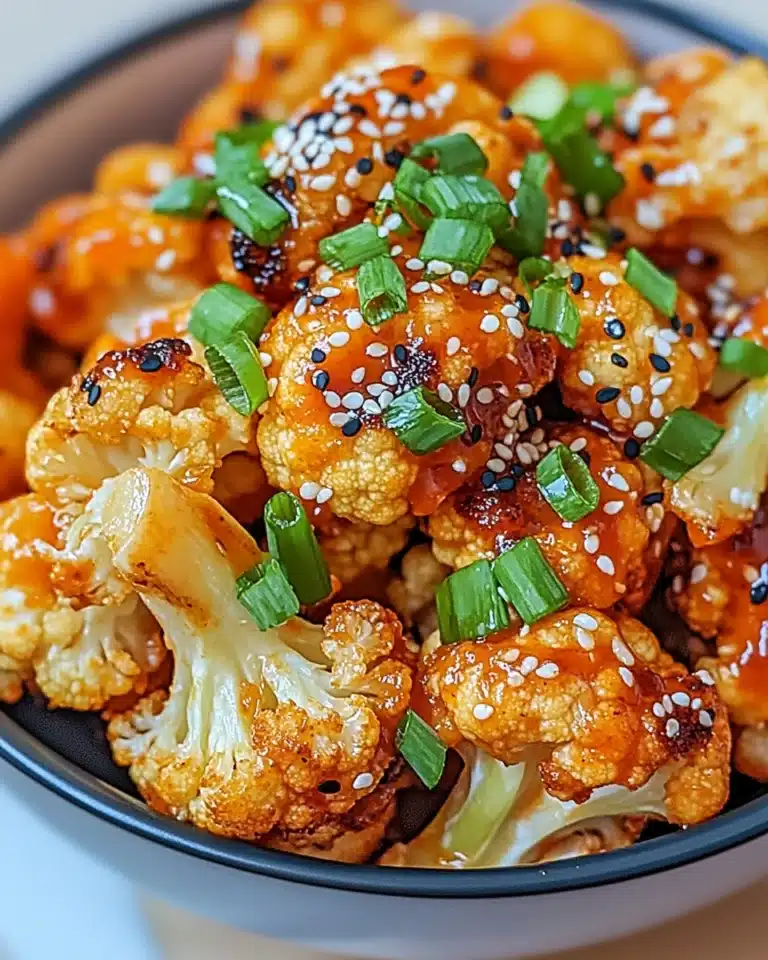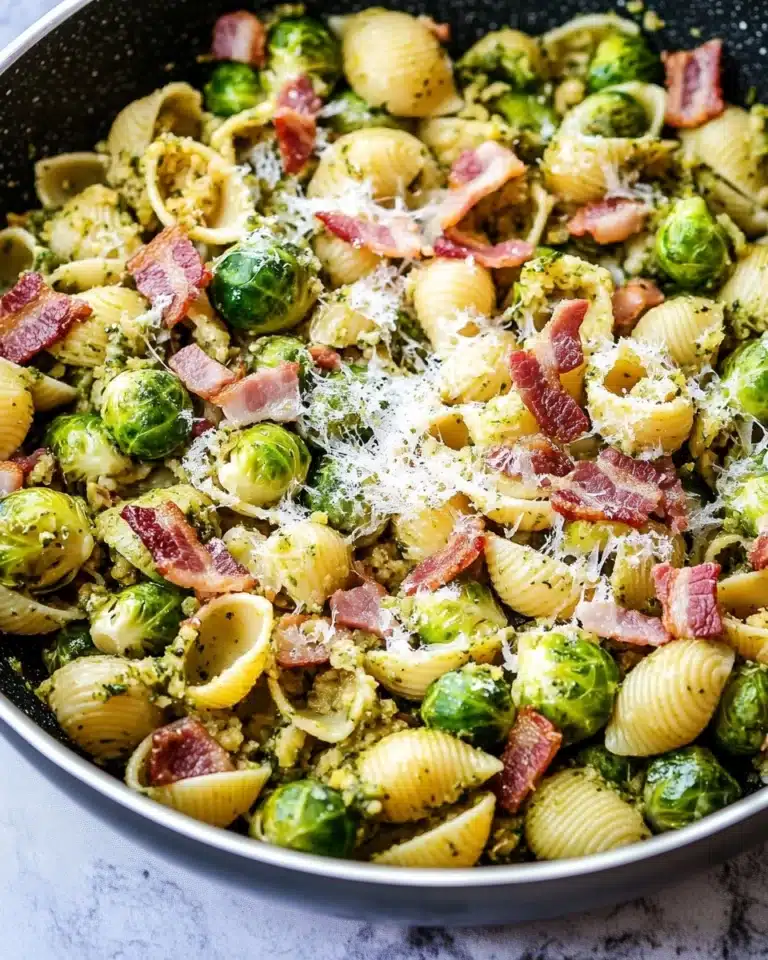If you’re craving the unmistakable stir-fried noodle goodness of Panda Express Chow Mein, you’re going to love this recipe! In just 15 minutes, you can bring that iconic savory, slightly sweet, and perfectly chewy noodle experience to your own kitchen. It’s satisfyingly simple, super quick, and packed with all the flavors you remember (plus, it tastes even fresher homemade!).
Why You’ll Love This Recipe
- Way Better Than Takeout: Fresh, sizzling noodles and crisp veggies come together for that classic Panda Express Chow Mein experience—right in your own kitchen!
- Fast & Fuss-Free: Dinner is on the table in 15 minutes, making this an unbeatable weeknight staple.
- Flexible Ingredients: Swap in your favorite veggies or protein and make it vegan, vegetarian, or gluten-free with simple tweaks.
- Family-Friendly Flavor: Its sweet, savory, and satisfying taste is a guaranteed crowd-pleaser for both kids and adults.
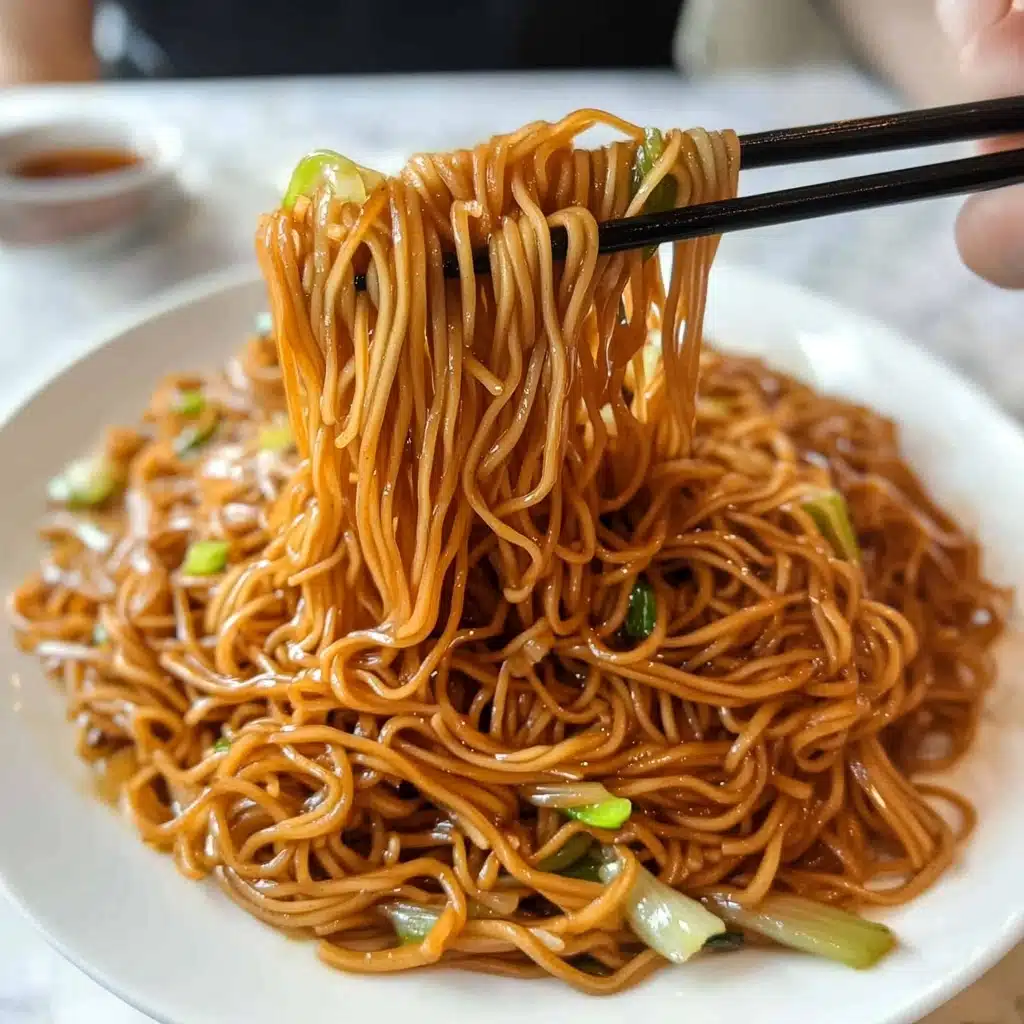
Ingredients You’ll Need
This Panda Express Chow Mein recipe uses a handful of simple, pantry-friendly ingredients—but each one plays a starring role in building that signature restaurant flavor and texture. Here’s what gives every bite its irresistible magic!
- Chow mein noodles (1 lb, fresh kind): These classic, slightly chewy noodles are the backbone of the dish—look for them in your local Asian market’s refrigerated section for best texture.
- Cabbage (2 cups, thinly sliced): Cabbage adds gentle sweetness, a pop of color, and those irresistible tender-crisp bites.
- Celery (1 cup, sliced): For fresh, crunchy texture and a mild earthiness that rounds out the veggies.
- Onion (1 small, sliced): Sautéed onions give a touch of savory depth and aromatic sweetness.
- Vegetable oil (2 Tbsp): A neutral oil is perfect for high-heat stir-frying and helps everything stay glossy and delicious.
- Soy sauce (2 Tbsp regular, ½ Tbsp dark): The blend of regular and dark soy sauce brings rich color and layers of savory flavor—dark soy is key for authentic color.
- Oyster sauce (2 Tbsp): This savory sauce adds that restaurant-level umami; use vegetarian stir fry sauce for a meatless option.
- Sesame oil (1 Tbsp): Just a splash lifts the whole dish with a nutty, toasty aroma (don’t skip it!).
- Garlic (2 cloves, minced): For fresh, aromatic punch with every mouthful.
- Chicken stock (¼ cup, low-sodium): Adds moisture and helps distribute the sauce—cold water works too!
- Cornstarch (½ Tbsp): A tiny bit thickens the sauce so it clings perfectly to each noodle. Potato starch works as well if needed.
Variations
Don’t be afraid to make this Panda Express Chow Mein recipe entirely your own! The basic framework is amazingly adaptable, so go wild with swaps based on what’s in your fridge or how you want to eat tonight.
- Vegan/Vegetarian: Use a vegetarian stir fry sauce instead of oyster sauce and swap the chicken stock with veggie broth (or just water).
- Add Protein: Toss in cooked chicken, shrimp, tofu, or even scrambled eggs to transform this into a protein-packed meal.
- Spicy Kick: Add a dash of chili flakes, sriracha, or thinly sliced fresh chilies to the sauce for some heat.
- Low-Sodium: Choose low-sodium soy sauce and broth for a lighter, heart-healthier take on your chow mein.
How to Make Panda Express Chow Mein
Step 1: Mix the Chow Mein Sauce
The flavorful backbone of this recipe is the sauce, and it takes just a minute! In a small bowl, whisk together the regular and dark soy sauces, oyster sauce, sesame oil, minced garlic, chicken stock, and cornstarch until smooth. Let it hang out while you prep the other ingredients—the flavors will mingle and deepen as you work.
Step 2: Prep and Blanch Your Noodles
Fill a big pan halfway with water and bring it to a boil. Drop in your fresh chow mein noodles and give them a gentle stir—blanch for just 20–30 seconds, only until they’re loosened up and tender. Strain them right away and set aside (don’t rinse them; you want that lovely starch for soaking up sauce later!).
Step 3: Sauté the Vegetables
Place your largest pan or wok over medium-high heat and swirl in one tablespoon of vegetable oil. When shimmering, add the sliced onions, cabbage, and celery. Stir-fry for about a minute—just until everything’s become slightly soft, glossy, and aromatic. The quick cook keeps the veggies fresh and crisp-tender.
Step 4: Combine Noodles and Sauce
Push the cooked veggies to the side of the pan to create a little open space. Pour the remaining oil into that spot, then toss in your drained noodles and the prepared sauce. Use tongs or two big forks to toss, toss, toss—mixing everything together until the noodles are glistening and evenly coated. This is where your kitchen starts to smell like Panda Express Chow Mein!
Step 5: Serve and Enjoy
As soon as the noodles are hot and glossy, take the pan off the heat. Serve immediately while it’s piping hot and the sauce is still clinging to every noodle—enjoy that first bite straight from the pan, no shame!
Pro Tips for Making Panda Express Chow Mein
- Noodle Procurement: Seek out fresh chow mein noodles for the closest match to the real deal—refrigerated noodles from an Asian grocery store give the best chew and flavor!
- Sauce Cling: Don’t rinse the noodles after blanching—this single step helps the savory sauce adhere and soak in, just like at Panda Express.
- Veggie Timing: Keep the stir-fry fiercely hot and quick—overcooking leads to limp veggies, but a fast sauté keeps everything crisp and lively.
- Finish With Flair: A drizzle of toasted sesame oil at the end intensifies the aroma—try swirling a touch through right before serving for extra wow.
How to Serve Panda Express Chow Mein
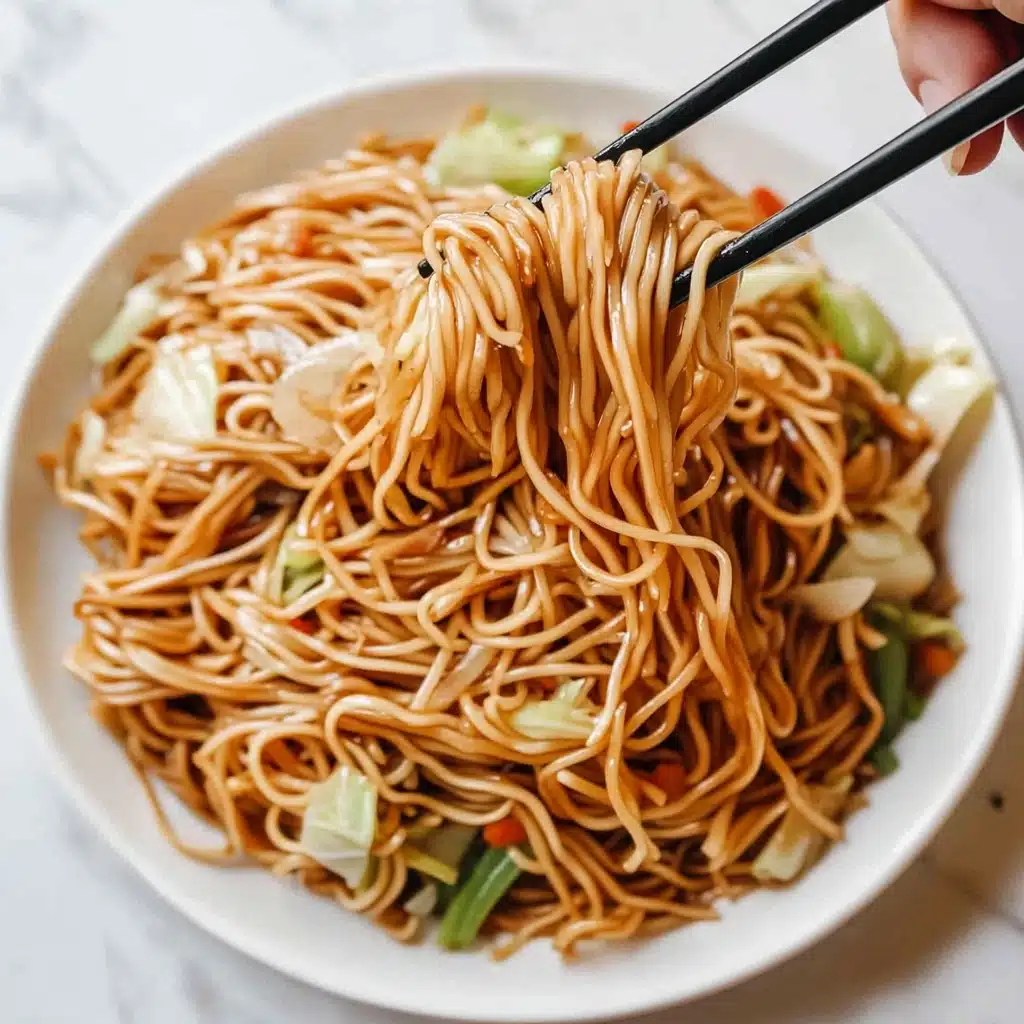
Garnishes
This dish practically begs for a little garnish magic! Try a sprinkle of sliced scallions or green onions for freshness, sesame seeds for crunch, or a few shreds of carrot for color pop. If you want extra zing, a drizzle of chili oil or a few dabs of sriracha look (and taste) fantastic on top.
Side Dishes
Panda Express Chow Mein is a star all on its own, but it really shines next to homemade orange chicken, honey walnut shrimp, egg rolls, or even simple steamed broccoli. Add some hot and sour soup or spring rolls for a takeout-style feast right at home!
Creative Ways to Present
Serve piled high in bowls for cozy weeknight dinners, or tangle the noodles on a platter for a party-worthy family-style spread. You can even twirl portions in muffin tins to create cute “noodle nests” for a fun kid-friendly lunch or serve in takeout-style boxes for game night.
Make Ahead and Storage
Storing Leftovers
Leftover Panda Express Chow Mein keeps beautifully in an airtight container in the fridge for up to 3 days. The flavors will continue to meld, and leftovers make an awesome next-day lunch.
Freezing
For best texture, fresh is key—but if you want to freeze, let the noodles cool completely, portion into zip-top bags, and freeze for up to 1 month. The vegetables will soften a bit when reheated but the flavors will still be spot-on.
Reheating
For tastiest results, reheat chow mein in a hot skillet with a splash of water or broth, tossing just until steaming and saucy. The microwave works too for a quick fix—just don’t overheat or the noodles may get mushy.
FAQs
-
Can I use dried noodles instead of fresh chow mein noodles?
Yes! Just cook dried chow mein noodles according to the package directions until barely tender, then drain well. Avoid overcooking, as they’ll soften up once tossed with the sauce and veggies.
-
Is Panda Express Chow Mein gluten-free?
Traditional Panda Express Chow Mein contains wheat noodles and soy/oyster sauces with gluten. For a gluten-free version, use gluten-free noodles and swap in tamari and gluten-free oyster sauce. Always double-check your labels!
-
Can I make this chow mein ahead for a party?
Absolutely! Make a batch a few hours ahead, store covered, and reheat quickly before serving—if it gets a bit dry, add a splash of broth or water as you toss it in the pan.
-
What’s the difference between chow mein and lo mein?
Chow mein noodles are typically stir-fried for a slightly chewy, crispy result, while lo mein noodles are softer and tossed in sauce. Panda Express Chow Mein is famous for its stir-fried texture and savory coating—a true classic!
Final Thoughts
You absolutely can—and should!—make this Panda Express Chow Mein at home for an instant comfort-food classic. Once you see how quick, tasty, and easy it is, you’ll want to whip it up anytime that noodle craving hits. Gather your ingredients, grab your wok, and get ready to taste pure takeout joy from your own stovetop. Enjoy every warm, saucy, delicious bite!
PrintPanda Express Chow Mein Recipe
Learn how to recreate the popular Panda Express Chow Mein at home with this easy and delicious recipe. Perfect for a quick weeknight meal!
- Prep Time: 10 minutes
- Cook Time: 5 minutes
- Total Time: 15 minutes
- Yield: 4 servings
- Category: Main Course
- Method: Stovetop
- Cuisine: Asian
- Diet: Vegetarian
Ingredients
Chow Mein Noodles:
- 1 lb fresh chow mein noodles
Vegetables:
- 2 cups thinly sliced cabbage
- 1 cup sliced celery
- 1 small onion, sliced
Noodle Sauce:
- 2 tbsp regular soy sauce
- 1/2 tbsp dark soy sauce
- 2 tbsp oyster sauce or vegetarian stir fry sauce
- 1 tbsp sesame oil
- 2 cloves garlic, minced
- 1/4 cup low-sodium chicken stock or cold water
- 1/2 tbsp cornstarch or potato starch
Instructions
- Noodle Sauce: In a small bowl, combine all noodle sauce ingredients and set aside.
- Prepare Noodles: Boil chow mein noodles for 20-30 seconds, then strain and set aside.
- Cook Vegetables: Heat oil in a pan, sauté onions, cabbage, and celery until softened.
- Add Noodles: Push veggies aside, add more oil, then noodles and sauce. Toss until coated.
- Serve: Remove from heat and enjoy!
Notes
- You can customize this dish by adding your favorite protein like chicken, beef, or tofu.
- Feel free to add more vegetables like bell peppers or bean sprouts for extra crunch.
Nutrition
- Serving Size: 1 serving
- Calories: 320
- Sugar: 5g
- Sodium: 780mg
- Fat: 10g
- Saturated Fat: 1.5g
- Unsaturated Fat: 6g
- Trans Fat: 0g
- Carbohydrates: 50g
- Fiber: 3g
- Protein: 8g
- Cholesterol: 0mg

